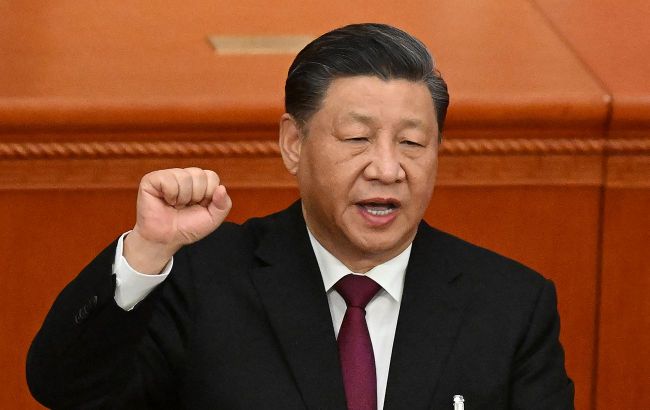Whose Taiwan? China's claims and world's stance
 Chinese leader Xi Jinping wants to control Taiwan (photo: Getty Images)
Chinese leader Xi Jinping wants to control Taiwan (photo: Getty Images)
Ukrainian Foreign Minister Dmytro Kuleba visited China. Following the talks, the Ministry of Foreign Affairs said Ukraine would continue to adhere to the principle of One China in Taiwan dispute. This statement sparked active discussions in the media.
RBC-Ukraine explains the One China principle and how it affects world politics.
Contents
- Origin of the Two Chinas concept
- How China and Taiwan compete for recognition
- Is Taiwan in international isolation?
Origin of the Two Chinas concept
During the first half of the 20th century, there was another state entity on the territory of the modern PRC - the Republic of China. It was created after the Xinhai Revolution in 1911-1912, which overthrew the Qing dynasty.
Led by the Kuomintang Party, the Republic of China controlled most of mainland China and fought against Japan in World War II. However, the power of the Communist Party of China grew during the war.
As a result, a civil war broke out in the country. In 1949, the Communists captured the entire mainland of China and proclaimed the People's Republic of China (PRC). The Kuomintang retained power only on the island of Taiwan. Both sides kept their ambitions to unite the entire territory of the country under their rule. At this time, the One China principle emerged, meaning that both Taiwan and mainland China are inseparable parts of One China.
Only the Kuomintang government was internationally recognized, so it was the one that was represented in key international organizations. Taiwan was a permanent member of the UN Security Council.
The situation changed in 1971 when the economic and military superiority of Communist China over Taiwan became impossible to ignore. A UN General Assembly resolution replaced the Republic of China (Taiwan) with the People's Republic of China in the UN Security Council.
How China and Taiwan compete for recognition
Foreign countries recognized the PRC and formally severed diplomatic relations with Taiwan. The concept of the One China policy is associated with this process. It means the official recognition of only one Chinese state: either the PRC or Taiwan.
As of January 2024, only 12 countries recognize Taiwan's state sovereignty.
The reasons for recognition/non-recognition are different in each case. For example, the United States established diplomatic relations with communist China in 1979, seeking a counterweight to the USSR. Some countries in Europe, Asia, and the Middle East recognized China for the sake of economic interests.
Recognition from small states in Oceania and Africa is openly “bought” by China, offering loans and investments in exchange for not recognizing Taiwan and establishing diplomatic relations with China.
Ukraine established diplomatic relations with China in 1991 and does not recognize Taiwan as an independent country. Kyiv also considers the island an integral part of China.
Is Taiwan in international isolation?
None of this means that Taiwan is in international isolation. The island's authorities have not declared independence and still nominally claim to return their government to Beijing. Similarly, the PRC has ambitions to establish its power over Taiwan. This dispute periodically leads to tensions in the region, especially because of the US position.
Having stopped recognizing Taiwan, the United States did not leave the island. The United States does not officially have diplomatic relations with Taiwan but maintains contacts through the American Institute in Taiwan, a non-governmental organization that de facto serves as the American embassy. In 1979, the US Congress passed the Taiwan Relations Act, which requires the US to supply military equipment and materials “necessary to enable Taiwan to maintain a sufficient self-defense capability.”
Washington's doctrine toward Taiwan is called “strategic ambiguity.” It consists of the implicit understanding or expectation that if China uses force against Taiwan, the United States may use its military potential to defend the island. In practice, however, this formula leaves room for maneuver.
Most other countries worldwide recognize the PRC government as the only legitimate Chinese government, cooperate with Taiwan without diplomatic recognition, and oppose any attempts to force Taiwan's unification with the PRC.
Surprisingly, contacts between the two Chinese territories also exist. Since the early 1990s, they have been maintained through non-governmental organizations: the Association for Relations Across the Taiwan Straits (based in Beijing) and the Straits Exchange Foundation (based in Taipei).
Currently, relations between the two countries are developing based on an agreement known as the 1992 Consensus. According to it, mainland China and Taiwan belong to the same China, so relations between them are not interstate. This allows both sides to maintain regular sea and air traffic, postal, and money transfers.
China has increased greatly its pressure on Taiwan in recent years. Chinese warships and aircraft are regularly active around the island.
In May, after the inauguration of Taiwan's newly elected president, Lai Ching Te, China organized military exercises to simulate bomber attacks.
The Taiwanese government is deepening its cooperation with the United States and other partners, hoping to ward off a Chinese invasion.

